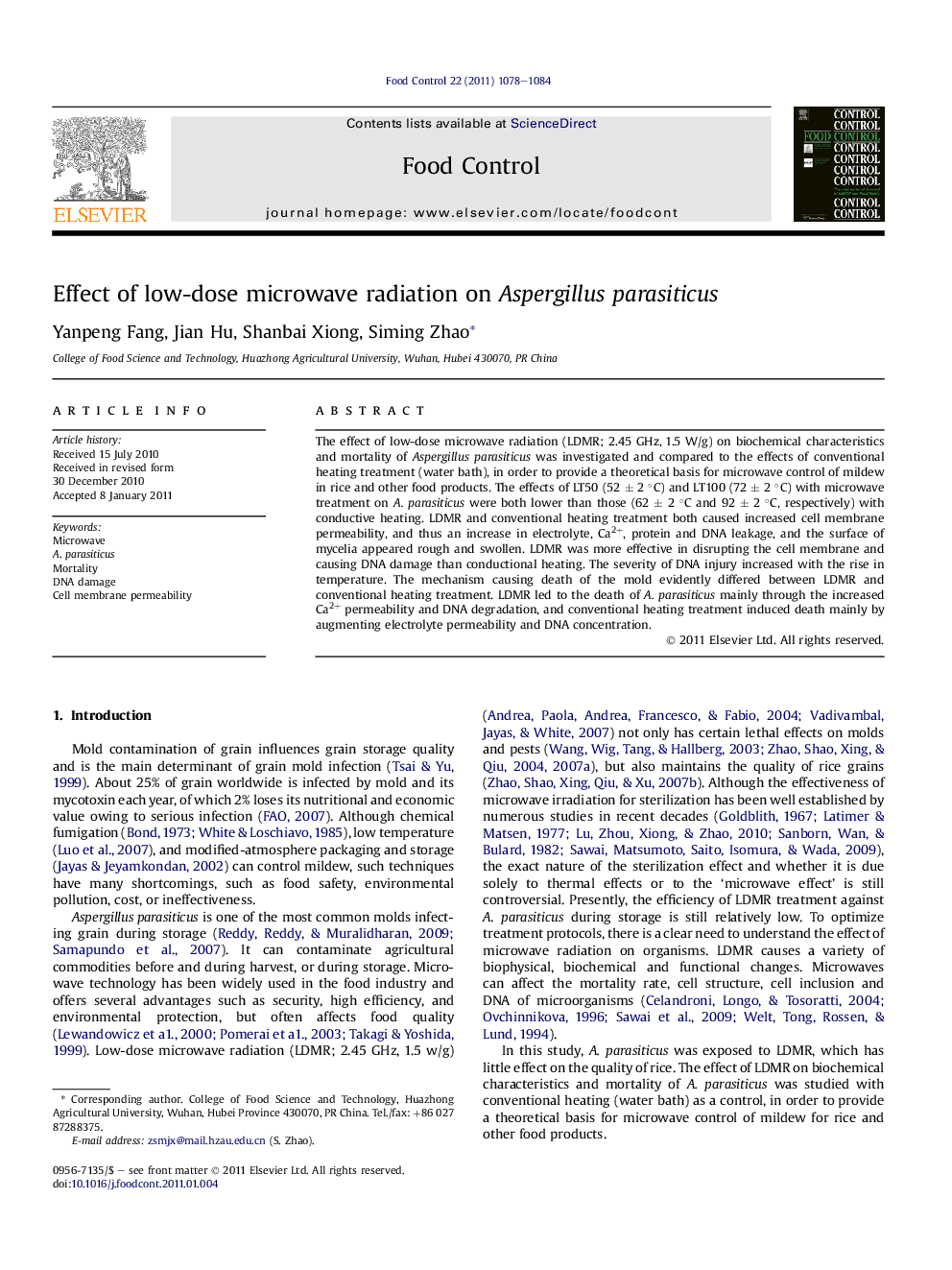| Article ID | Journal | Published Year | Pages | File Type |
|---|---|---|---|---|
| 4559720 | Food Control | 2011 | 7 Pages |
The effect of low-dose microwave radiation (LDMR; 2.45 GHz, 1.5 W/g) on biochemical characteristics and mortality of Aspergillus parasiticus was investigated and compared to the effects of conventional heating treatment (water bath), in order to provide a theoretical basis for microwave control of mildew in rice and other food products. The effects of LT50 (52 ± 2 °C) and LT100 (72 ± 2 °C) with microwave treatment on A. parasiticus were both lower than those (62 ± 2 °C and 92 ± 2 °C, respectively) with conductive heating. LDMR and conventional heating treatment both caused increased cell membrane permeability, and thus an increase in electrolyte, Ca2+, protein and DNA leakage, and the surface of mycelia appeared rough and swollen. LDMR was more effective in disrupting the cell membrane and causing DNA damage than conductional heating. The severity of DNA injury increased with the rise in temperature. The mechanism causing death of the mold evidently differed between LDMR and conventional heating treatment. LDMR led to the death of A. parasiticus mainly through the increased Ca2+ permeability and DNA degradation, and conventional heating treatment induced death mainly by augmenting electrolyte permeability and DNA concentration.
